Boil Strain and Boil Again Instat Noodle Ridiculous Idea
Hot Dry Noodles (Re Gan Mian, 热干面)
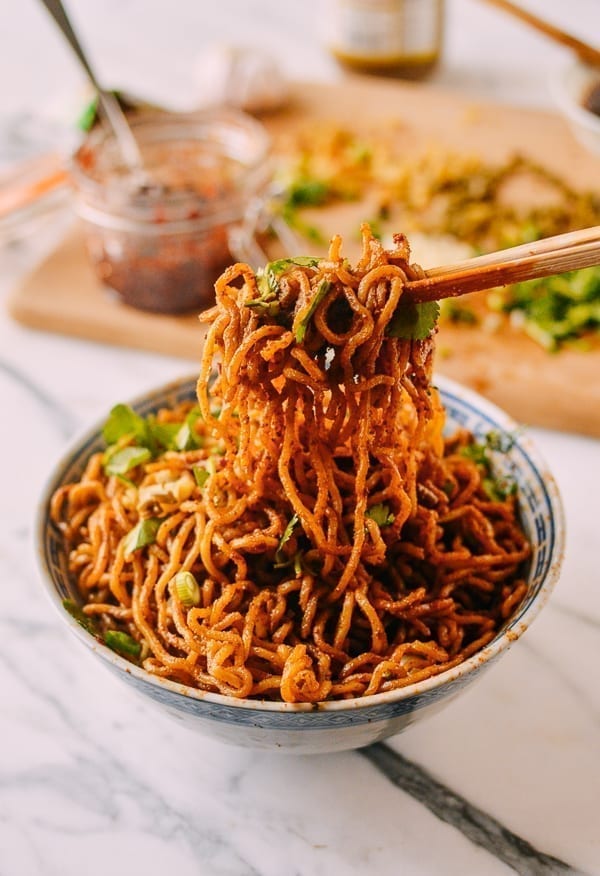
I can't talk about Hot Dry Noodles, or 热干面 (pinyin: rè gān miàn ), without getting a little personal. During the Great Leap Forward in the late 1950s, my parents left home and traveled to vocational schools in poor villages near Wuhan, 武汉 (capital of Hubei Province, 湖北).
Those schools promised potential students three meals a day, and my parents, both 16-year-olds at the time, went in search of something resembling stability. Years later, they met and got married, and our whole family eventually immigrated to the United States in the early 80s, thanks to my grandmother.
Though I was born in Shanghai and consider myself Shanghainese, I spent my early childhood in one of those small and extremely poor villages. I can't even remember the name of the village, but that was where I first encountered Re Gan Mian and formed my first memories of the dish.
What is Re Gan Mian, or Hot Dry Noodles?
"Re, 热" means hot, "Gan,干" means dry, and "Mian, 面" means noodles. Re Gan Mian, or "Hot Dry Noodles" are a top breakfast choice in Hubei Province.
Hot Dry Noodles are also considered one of the best noodle dishes in China. It has gained popularity over the years, with Re Gan Mian restaurants popping up throughout major cities.
While my mother enjoyed little about living in Hubei, she did love the region's signature noodle dish. I, on the other hand, was not crazy about Re Gan Mian as a child. I did not like the thick texture of the sauce or the taste of the raw scallion garnish. My childhood dislike was a major killjoy to my mother's enthusiasm every time we had it, as she saw it as a treat.
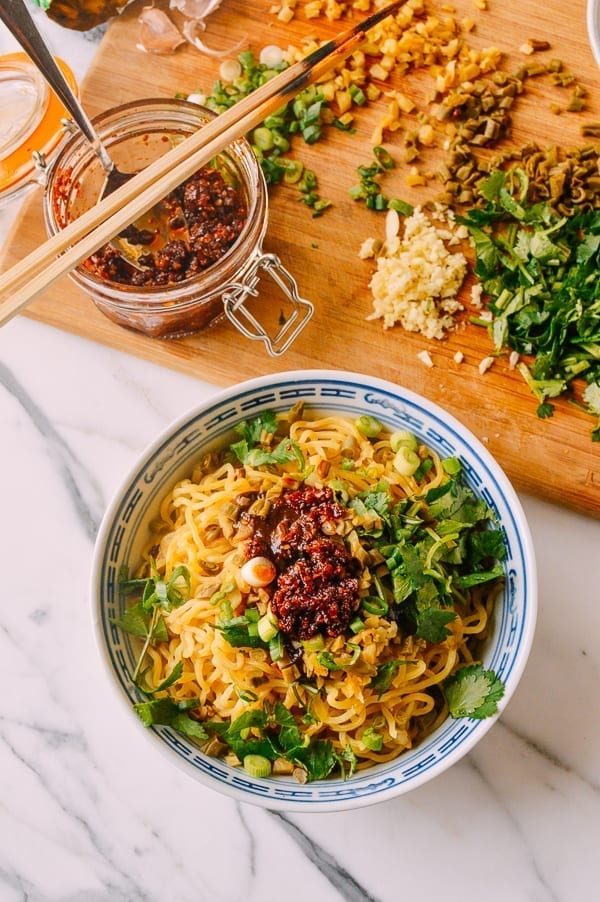
Even today, I'm still not crazy about dishes involving sesame paste. But as a food blogger, I wanted to do this dish justice. I've read countless Chinese articles and watched many videos about Hot Dry Noodles to develop it.
Making Hot Dry Noodles: Key Tips
- Alkaline noodles must be used in this dish for a truly authentic flavor. The most readily available alkaline noodles available in Asian grocery stores are alkaline fresh ramen noodles, which is what I used here.
- This recipe calls for soy sauce, but if you've by any chance tried our Braised Instant Pot Pork Belly or Instant Pot Soy Sauce Chicken, use the "master sauce" from those recipes to mix the sauce instead of soy sauce. This is traditional and adds more umami to the dish.
- Restaurants in China pre-cook the noodles just until very al dente. They mix the noodles with sesame oil and use a fan to cool and dry them, making the noodles chewier. Before serving, they cook the noodles again in boiling water for a few seconds, just long enough to heat them up. I've developed a method for the home-cooked version that isn't quite as fussy. I do like to idea of mixing the cooked noodles with a bit of sesame oil. It gives the noodles extra sesame flavor, prevents them from sticking together, also makes mixing in the sauce easier.
- Adjust the flavor and thickness of the sauce to your own liking. Note that a thinner sauce is easier to mix with the noodles. In my case, I like a thinner sauce, a little less vinegar, more chili oil, a pinch of cilantro, and hold the scallions. :)
- If raw garlic is not your thing, pre-soak the minced garlic in a tablespoon of hot water to mellow out the sharpness.
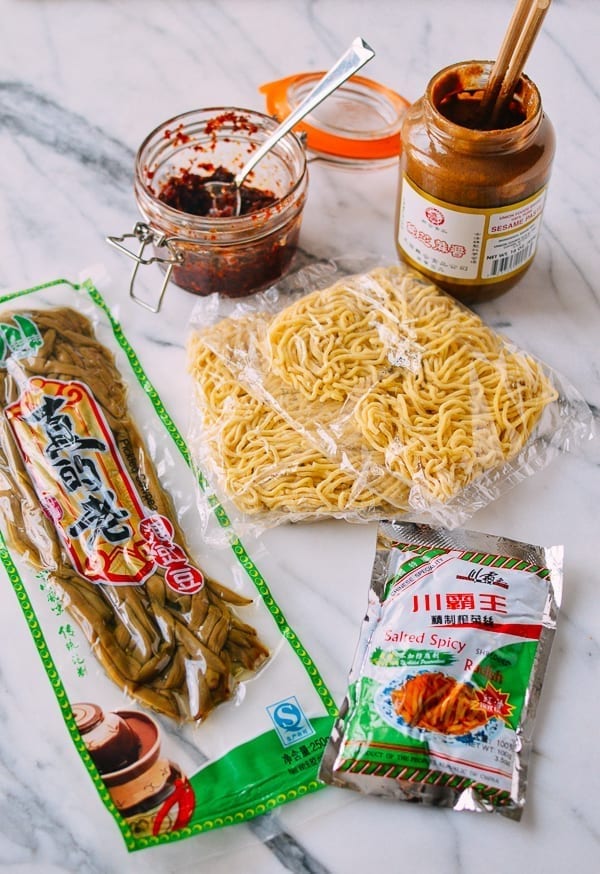
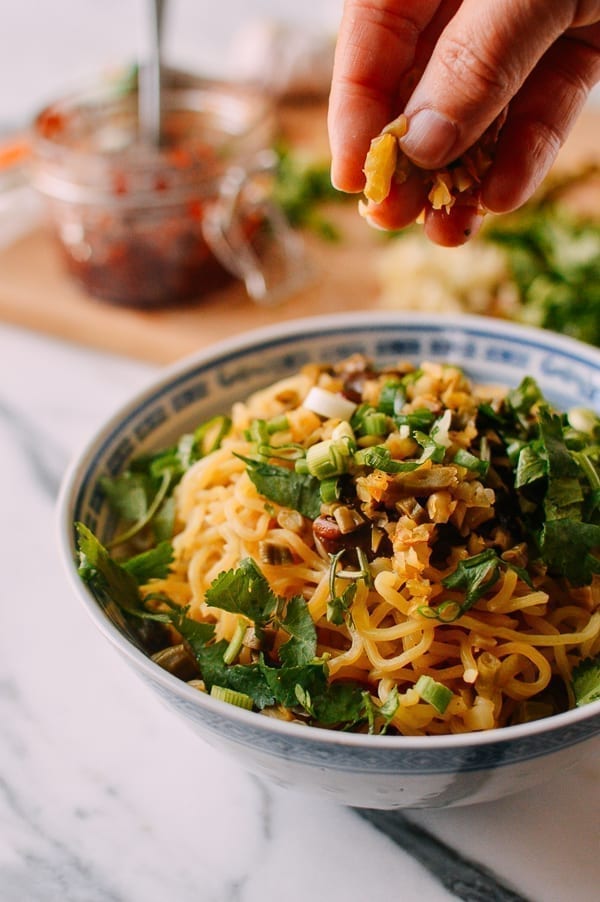
Hot Dry Noodles (Re Gan Mian, 热干面): The Recipe
Start by preparing the sauce. Add 3 tablespoons sesame paste to a bowl, and gradually stir in 2 tablespoons sesame oil to smooth out the paste.
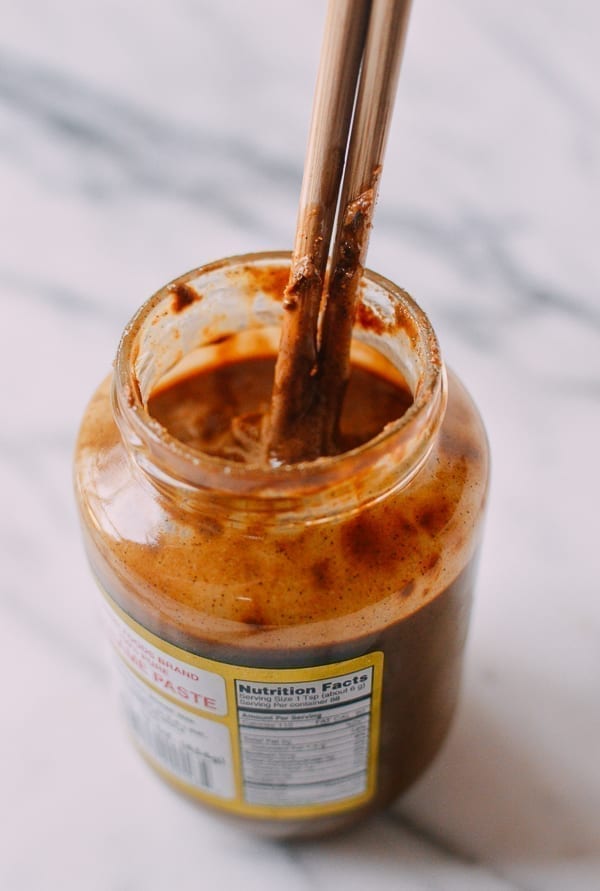
Then add 1 ½ teaspoons dark soy sauce and 1 tablespoon light soy sauce (or 4 ½ teaspoons of master sauce , if you have it). Add 1 teaspoon sugar, and stir until well combined. If the sauce is still too thick, add in a few drops of warm water or more master sauce to thin it out. Add salt to taste and set aside. You can prepare this sauce ahead of time.
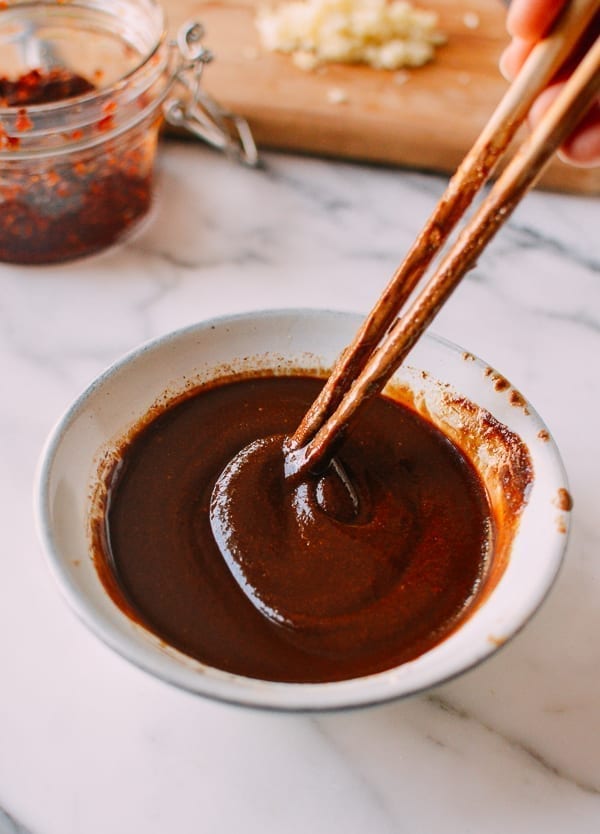
Boil a pot of water to cook the noodle as per package instructions, undercooking it by 1 minute to ensure they remain chewy and al dente. Drain. Shake off any excess liquid from the noodles, and put them in a large bowl.
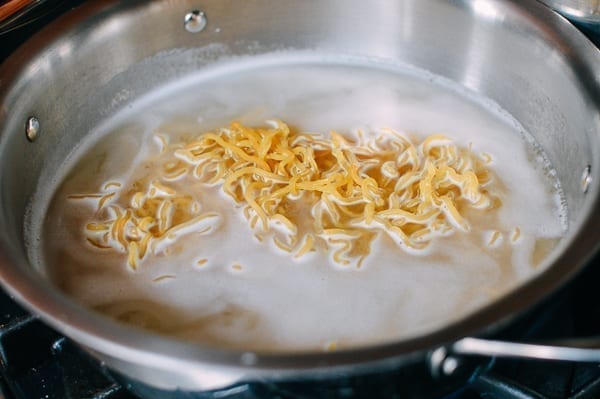
Toss the noodles with the remaining 1 ½ teaspoons sesame oil to prevent noodles from sticking together. Add in the preserved mustard stems (zha cai), pickled long beans, garlic, chili oil, cilantro, scallions, Chinese black vinegar, and tahini sauce.
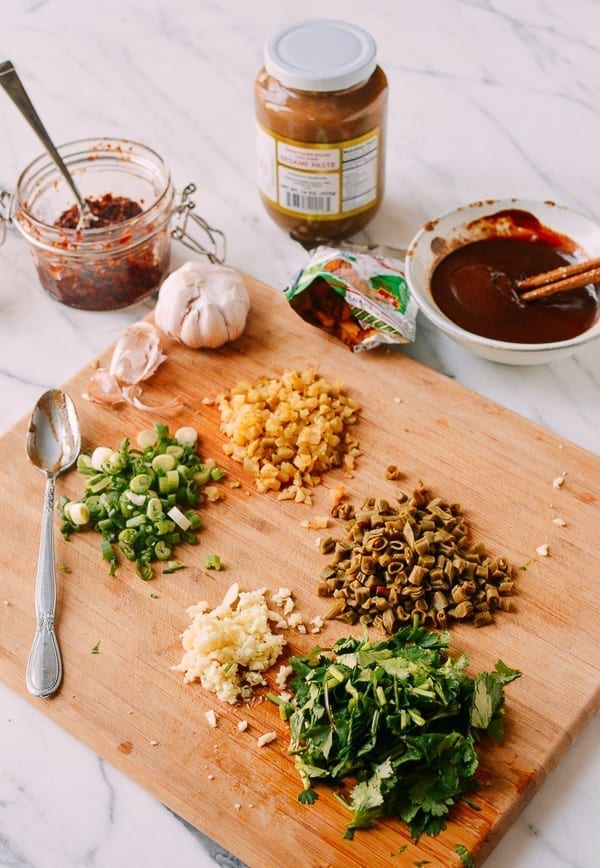
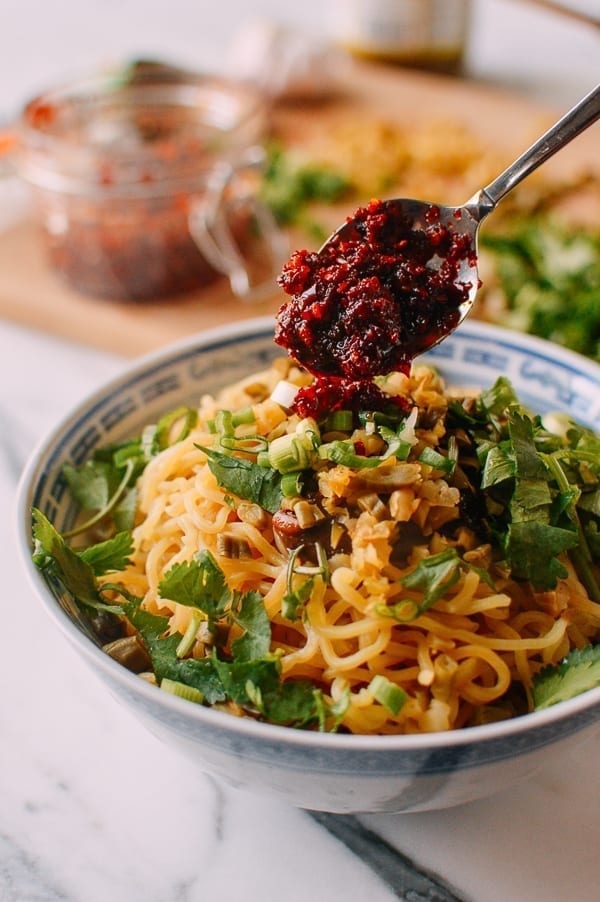
Quickly toss the noodles together and serve hot.
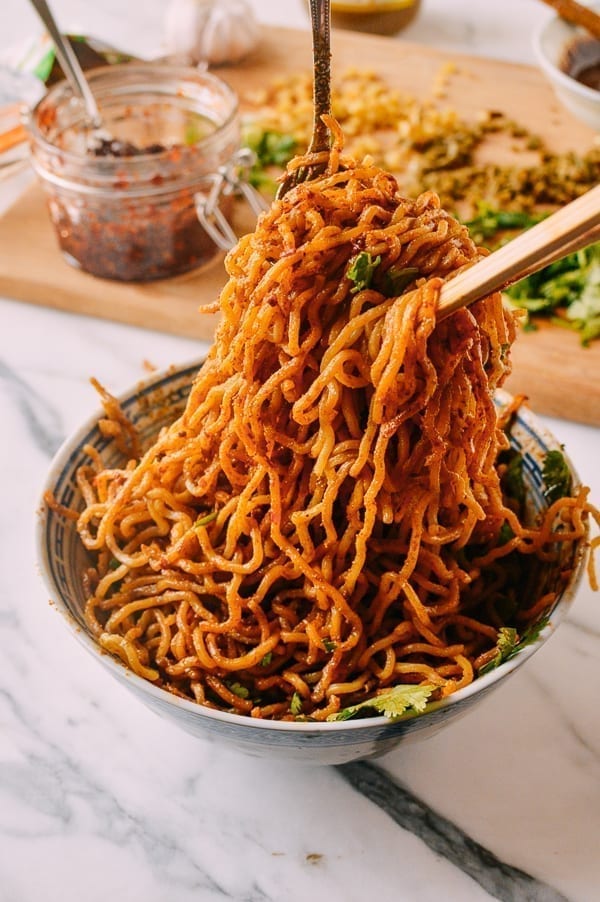
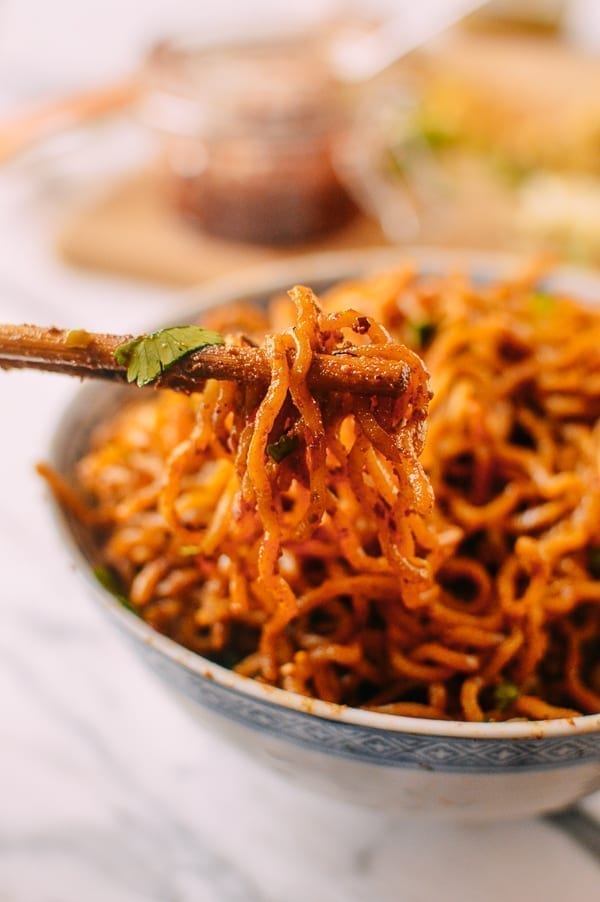
Prep: 20 minutes
Cook: 15 minutes
Total: 35 minutes
- 3 tablespoons sesame paste or tahini
- 2 tablespoons sesame oil (plus 1 ½ teaspoons, divided)
- 1 ½ teaspoons dark soy sauce
- 1 tablespoon light soy sauce
- 1/2 teaspoon sugar
- salt (to taste)
- 240 g about 8 oz. fresh alkaline noodles
- 1/4 cup chopped preserved mustard stems, zha cai, 榨菜 (or to taste)
- 1/4 cup chopped pickled long beans, suan dou jiao, 酸豆角 (or to taste)
- 1 teaspoon garlic (minced)
- Chili oil (to taste)
- 1/4 cup cilantro (chopped)
- 2 scallions (chopped)
- 1/2 teaspoon Chinese black vinegar
-
Start by preparing the sauce. Add 3 tablespoons sesame paste to a bowl, and gradually stir in 2 tablespoons sesame oil to smooth out the paste.
-
Then add 1 ½ teaspoons dark soy sauce and 1 tablespoon light soy sauce (or 4 ½ teaspoons of master sauce, if you have it). Add 1 teaspoon sugar, and stir until well combined. If the sauce is still too thick, add in a few drops of warm water or more master sauce to thin it out. Add salt to taste and set aside. You can prepare this sauce ahead of time.
-
Boil a pot of water to cook the noodle as per package instructions, undercooking it by 1 minute to ensure they remain chewy and al dente. Drain. Shake off any excess liquid from the noodles, and put them in a large bowl.
-
Toss the noodles with the remaining 1 ½ teaspoons sesame oil to prevent noodles from sticking together. Add in the preserved radish, pickled long beans, garlic, chili oil, cilantro, scallions, vinegar, and tahini sauce. Quickly toss the noodles together and serve hot.
Calories: 654 kcal (33%) Carbohydrates: 85 g (28%) Protein: 18 g (36%) Fat: 45 g (69%) Saturated Fat: 13 g (65%) Sodium: 995 mg (41%) Potassium: 511 mg (15%) Fiber: 5 g (20%) Sugar: 4 g (4%) Vitamin A: 290 IU (6%) Vitamin C: 4 mg (5%) Calcium: 84 mg (8%) Iron: 6 mg (33%)
Reader Interactions
Source: https://thewoksoflife.com/hot-dry-noodles-re-gan-mian/
0 Response to "Boil Strain and Boil Again Instat Noodle Ridiculous Idea"
Post a Comment